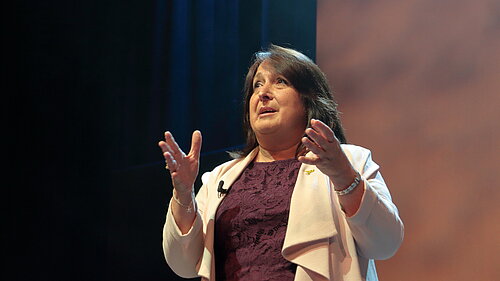Ambulances took the equivalent of 41 years to turn around in 2024

Liberal Democrat Scottish Affairs spokesperson Christine Jardine MP has today said that the Scottish Government must fix problems at both the front door and the back door of the NHS after research by her party found that it took ambulances a total time of 361,000 hours- the equivalent of 41 years- to unload and depart from hospitals in 2024.
A Scottish Liberal Democrat freedom of information request asked the Scottish Ambulance Service for the length of time ambulances had to wait between arriving and departing from hospitals.
The request found that:
- In 2024, the total turnaround time for ambulances across all health boards was 361,753 hours- just over 41 years.
- In the same year, NHS Grampian had the longest single turnaround time at 16 hours and 42 minutes.
- NHS Greater Glasgow and Clyde saw a total turnaround time for ambulances of 78,248 hours in 2024. This figure was 44,741 hours in NHS Lothian and 26,346 hours in NHS Fife.
- Since 2022, the total turnaround time for ambulances has increased by at least 10%, shooting up from 322,828 hours.
- Between 2022 and 2024, it has taken ambulances a total 1,012,848 hours to turn around, the equivalent of 115 years.
Ms Jardine said:
“These are devastating delays. They reflect all those people who have waited in agony for an ambulance to arrive, frightened that one may never come.
“Under the SNP, despite the best efforts of staff, ambulances are waiting longer and longer outside of hospitals because staff are struggling to find the space to receive new patients. It’s preventing people from getting the care and treatment they desperately need.
“The Scottish Government must finally get serious about tackling the problems at both the front door and the back door of the NHS.
“That’s why Scottish Liberal Democrats are so focused on repairing the crisis in social care, starting with a new UK-wide minimum wage for care workers that is £2 higher. This will give more people the care they need at home or in the community, freeing up space and capacity in hospitals and getting ambulances on their way to the next callout as swiftly as possible."
